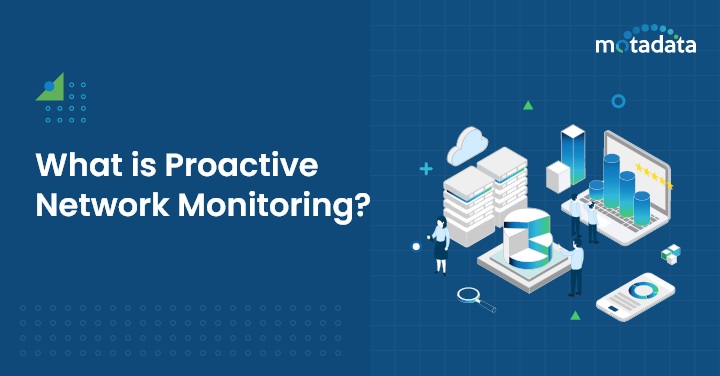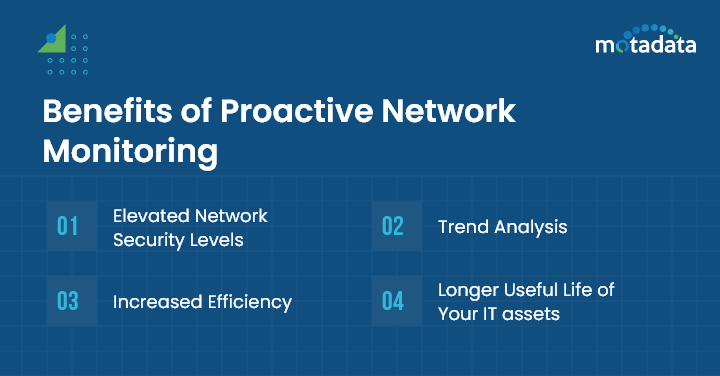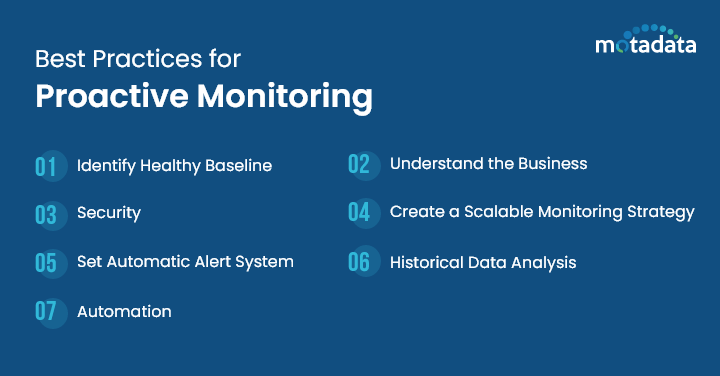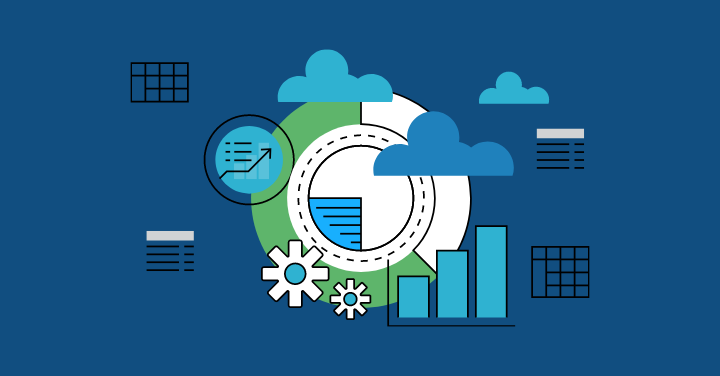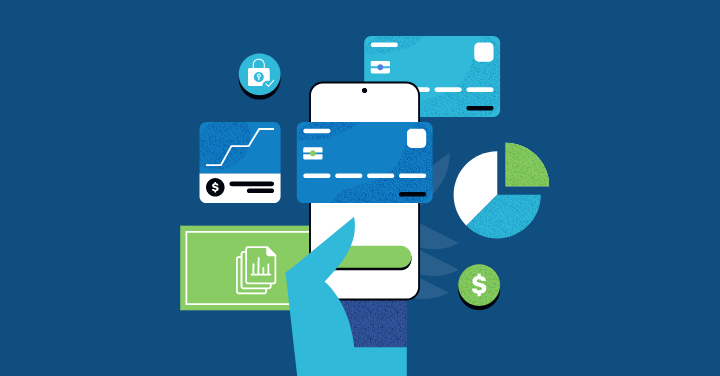Proactive network monitoring is no less than a superpower.
Just like how the Spidey sense alerted Spiderman of any dangers, proactive network monitoring also helps you to:
- Identify issues before they cause disruptions
- Optimize performance
- Keep network healthy and secure
This is why every business big or small is investing in proactive monitoring to optimize their systems and resolve security issues in real-time.
In this blog, we will share some of the key benefits of proactive network monitoring along with the top challenges and best practices that can help your business in the long run.
What is Proactive Network Monitoring?
Proactive Monitoring is a practice that most businesses rely on to discover and resolve potential issues before they result in downtime.
This approach allows businesses to:
- Track all the network components
- Detect anomalies in real-time
- Analyze performance metrics
As a result, you can minimize the downtime and maximize overall performance by identifying issues at an early stage.
It even installs patches without asking for the user’s permission to ensure optimal security.
You can find several tools in the market to perform proactive monitoring and analyzing data.
Be it your desktop, router, or network, businesses can track all of it without interrupting their daily IT operations with proactive monitoring from a centralized location.
Apart from maintaining optimal security, this practice helps enhance user experience and guarantees smooth operations.
Maintaining a strong and effective network infrastructure ultimately increases organizational productivity and lowers the likelihood of expensive outages or data breaches.
Why is Proactive Network Monitoring Important?
Even minor computer or network problems can have a big effect on performance or cause data loss.
Hence, to keep the business safe from problems that can become serious later, organizations must invest in proactive network monitoring.
This helps in detecting and resolving performance issues, bottlenecks, and potential failures in real-time resulting in uninterrupted operations.
With constant monitoring, you can even identify unusual patterns or suspicious actions that might point to a security risk beforehand.
This can further reduce the chances of data breaches. Additionally, resolving issues in real-time helps preserve employee productivity and improve user experience.
4 Benefits of Proactive Network Monitoring
By employing third-party tools for proactive monitoring, you can keep your systems operating at their best.
Below are a few more benefits of proactive network monitoring that can help you achieve your business goals.
1.Elevated Network Security Levels
If you want to improve the security levels of your networks, it is best to invest in proactive network management.
This method allows businesses to discover and manage issues before being visible to users or customers.
Also, by resolving them in real-time, you can prevent exploitation by attackers.
In simple terms, you can stay ahead of the attackers and prevent data breaches.
2. Trend Analysis
When network issues arise during peak times, detecting them can be a challenging task.
However, with constant monitoring, businesses can stay up-to-date about the latest trends in the network performance.
It becomes much easier for users to identify and analyze performance patterns.
3. Increased Efficiency
Another benefit of the proactive monitoring approach is users can quickly identify inefficiencies and bottlenecks.
As a result, they can work on these issues in real-time and save on additional costs, thus boosting the productivity level.
4. Longer Useful Life of Your IT assets
With early detection of issues, organizations can track IT assets and prevent them from worsening and possibly becoming unusable.
Further, you can even perform analysis on the IT asset operation patterns and trends.
It will later aid in the replacement or upgradation of assets before they stop operating.
This strategy prolongs the equipment’s overall lifespan while preventing unplanned downtime.
When to Use Proactive Network Monitoring?
Most businesses feel the urge to adopt a proactive monitoring approach in case of an emergency, i.e., facing network degradation or performance issues.
By adopting the proactive approach, they are able to pinpoint the specific network issue faster that might be affecting their company.
They can even perform network assessments to discover and troubleshoot the issues.
Some businesses use free network monitoring software to do the same, while others go in for a constant and proactive network monitoring approach.
With the proactive monitoring technique, businesses can track the overall performance of an application faster and identify the root cause of performance degradation.
In short, go in for proactive monitoring if you want to:
- Discover network issues faster before creating any impact on performance
- Perform continuous monitoring for better results
- Get an update on network degradation before it becomes a major issue
What Are the Challenges for Proactive Network Monitoring?
As discussed above, error detection in the early stage, better efficiency level and customer service, and longer IT asset life are a few benefits of proactive monitoring.
However, to achieve these benefits, proactive monitoring must be properly implemented.
In some cases, businesses find issues in the implementation process.
Some businesses even face issues in data quality, scalability, and change resistance. Alert fatigue and resource limitation are a few more that one must keep in mind.
Businesses must stay up-to-date and keep themselves aware of these challenges to prevent data loss.
Also, on discovering an issue, they must take the necessary steps in real time for better success.
However, with proactive monitoring, businesses can identify issues and opportunities, make decisions about how to enhance their operations and remain up to date.
7 Best Practices for Proactive Monitoring
To ensure that your proactive monitoring method is successful, you must adopt a structured approach.
Businesses should follow best practices that will help enhance their proactive monitoring strategies in the future.
The idea behind adopting proactive over reactive monitoring technique is it helps you act before the problems create any impact.
Let us look at some of the best practices that can help you achieve the best results.
1. Identify Healthy Baseline
Establishing a sound baseline is an essential part of proactive monitoring best practices.
Once you know what actions can make you become healthy, you can grow your business faster.
For example, if you can track the patterns and trends in metrics in real time, you can make improved decisions and prevent breaches.
For creating a healthy baseline, it is essential that you:
- Maintain a historical data
- Keep note of all patterns
- Set up thresholds
- Constantly perform monitoring
These few actions can help you in the process of determining your healthy baseline.
2. Understand the Business
Proactive monitoring allows businesses to collect data from all components in the network and run proper analysis.
By understanding the business, it becomes much easier to identify the key performance indicators which ultimately helps you to develop an effective monitoring strategy.
Make sure you set benchmarks and run regular monitoring to create a positive impact from it which will further aid in achieving your goals.
Also, well defined success metrics and key process identification can help create positive results.
3. Security
Businesses can raise the level of network security and guarantee that attackers are less successful by implementing proactive monitoring.
This approach helps users discover issues in crucial assets and take necessary actions at an initial stage.
With these actions, businesses can prevent data loss and breaches.
Also, by automating tasks, setting thresholds and developing security metrics, businesses can improve their security level.
Another point to keep note of is to ensure that there are no policy violations, and if anything suspicious is found, it gets fixed in real-time.
Try to perform security audits to track errors beforehand or run tests on a regular basis.
By adapting these practices, businesses can prevent breaches, maintain clients’ trust, and protect crucial assets.
4. Create a Scalable Monitoring Strategy
It is essential to design a monitoring strategy that is scalable as the businesses are growing fast to adapt to new technologies.
To maintain the balance, your monitoring strategy must be advanced, i.e., you must incorporate automation, use a centralized platform, and constantly review your network and strategies.
Additionally, make growth plans and modify your requirements as per the need.
5. Set Automatic Alert System
Make sure to set an automatic alert feature with proactive network monitoring as it will allow users to stay up-to-date about incoming threats and issues.
Further, they can discover and take corrective measures before the issue affects your network performance.
Be it malware infections, unauthorized attempts, potential bottlenecks, or any other suspicious activity, the alert feature will update on discovering any of these in real-time.
6. Historical Data Analysis
Make sure to cross-check the historical data to understand the network behavior and trends.
This will assist you in anticipating problems and taking proactive measures to resolve them before they arise.
7. Automation
Automation reduces human error as well as makes it easier for users to send automatic notifications and evaluate performance metrics without any hassle.
In short, with the use of automation tools, you can automate network monitoring tasks.
This practice will lessen your burden and allow employees to focus on more serious issues.
Conclusion
Proactive monitoring practices are used by businesses to resolve issues before they impact user experience or result in downtime.
These practices help figure out bottlenecks and performance issues beforehand that cause disruption in operations.
They even help boost security by detecting malware infections and suspicious actions at an early stage.
Businesses can even stay up-to-date about the latest trends in the network with constant monitoring practices and save on additional expenses.
We have listed many benefits of proactive network monitoring, but knowing when to use it is important.
If you are noticing network degradation or performance issues, it is best that you adopt the proactive monitoring approach.
You can also invest in platforms like Motadata that offer excellent network monitoring software that will help analyze your network and improve its performance.
Furthermore, go through the challenges and best practices that will help you in making the right decisions.
FAQs
The main purpose of proactive monitoring is to help discover and address the issues in the network and system before they result in downtime or performance degradation. Proactive network monitoring solutions run constant analysis on all the metrics and patterns in the network to detect issues or errors at an early stage. It not only minimizes the risk of downtime but also improves the overall performance and user experience.
Businesses can optimize their resources, apply preventive measures, and improve network security based on the gathered real-time insights. If you want to keep your infrastructure strong and resilient in the evolving world of technology, you must adopt a proactive network monitoring approach.
Proactive approach focuses on routine monitoring of infrastructure health and performance. However, the reactive approach is about addressing issues after they have disrupted your operations. Proactive monitoring is all about staying ahead of damage, whereas the reactive approach is like a remedy after the damage. Another factor that sets it apart from the reactive approach is it anticipates and averts future issues in real-time in addition to identifying existing network problems.
Proactive monitoring allows businesses to collect all the information related to the network/system and perform analysis on a constant basis. As a result, they are able to detect potential issues in the initial stage and intervene before the problem escalates. This, in return, helps prevent downtime and reduce disruptions faster. Additionally, it allows users to accumulate all the historical data that can be further used to run root cause analysis.
By tracking each and every pattern or trend, the team can quickly identify the root cause of the issue and make better decisions for the business. Additionally, the proactive strategy is not only beneficial in issue resolution but also improves overall efficiency by discovering the root causes in real-time.
Yes, you can customize or change the proactive monitoring solutions as per your needs and business goals. Basically, you can configure it to keep track of specific solutions that matter to you the most or are crucial to the business. You can customize your settings to ensure that everything operates as efficiently as possible rather than being forced to use a one-size-fits-all strategy.
Technology advancements have made it crucial for businesses to invest into practices that help them find bottlenecks and issues in real-time. With proactive monitoring insights, businesses can better manage resources and take informed decisions. Additionally, they can upgrade or modify their plan based on the current demand of the business.
Additionally, depending on the usage pattern, businesses can make quick decisions on infrastructure expansion. In fact, the early warning system helps businesses avoid unexpected capacity problems and maximizes resource use. Proactive monitoring also helps organizations seamlessly integrate with new technologies and promote long-term scalability.
Here are a few top key metrics and KPIs that every business must monitor for network reliability, including:
- Bandwidth Usage – This metric helps track the amount of bandwidth being used and discover possible congestion or bottlenecks.
- Latency – Another key metric that updates the time taken to move data from one channel to the other within a network. It even can be used to detect possible problems with network performance.
- Packet Loss – This metric helps count the number of packets dropped or lost during transmission, which further aids in identifying potential reliability issues.
- Jitter –When it comes to real-time applications like VoIP and video conferencing, jitter is another metric that can be useful in identifying possible performance issues.
- Network Availability –Calculates the percentage of time your network resources are accessible that helps identify downtime issues.
- Error Rate –Helps track the errors that occur during the period of transmission which are used for identifying reliability issues.
- Throughput –The metric measures how much data is sent over a network in a given amount of time and can be used to spot possible capacity problems or bottlenecks.



